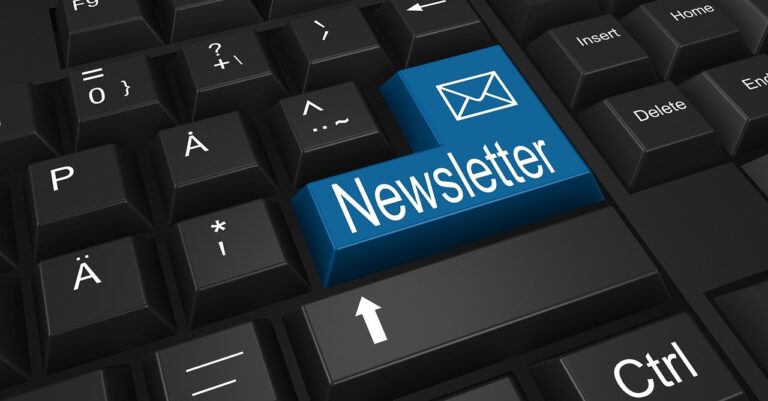Learn some basic tips for maintaining and securing your WordPress website.
Cleaning Up Themes
When it comes to managing a WordPress website, ensuring its cleanliness and security is paramount. In this segment, we will delve into the importance of cleaning up themes, which includes deleting inactive themes to prevent security threats, activating only the theme currently in use, and regularly updating the theme for security patches.
Delete Inactive Themes
One common oversight among website owners is leaving inactive themes installed. These dormant themes can pose a serious security threat to your website. When themes are not updated or used, they become vulnerable entry points for hackers to infiltrate your site and potentially compromise sensitive data. To mitigate this risk, it is crucial to regularly review your themes and delete any that are not actively in use.
Activate Only the Current Theme
Having multiple themes installed on your WordPress dashboard can lead to confusion and security vulnerabilities. It is recommended to activate only the theme that is currently being used on your website. By doing so, you reduce the surface area for potential security breaches and streamline the management of your site’s design and functionality.
Regularly Update Your Theme
Keeping your theme up to date is essential for maintaining the security and integrity of your website. Theme developers often release updates that include security patches to address known vulnerabilities. By regularly updating your theme, you ensure that your site is equipped with the latest security enhancements and bug fixes, reducing the risk of being targeted by malicious actors.
In conclusion, cleaning up themes is a fundamental aspect of WordPress maintenance that should not be overlooked. By deleting inactive themes, activating only the current theme, and updating regularly, you can enhance the security posture of your website and protect it from potential threats.
Managing Plugins
Research and Choose Plugins Carefully
When it comes to managing plugins for your website, one of the most crucial aspects is the initial research and selection process. It’s easy to get overwhelmed by the sheer number of plugins available, especially when you’re starting out. This is why taking the time to carefully research and choose the right plugins for your specific needs is essential.
Before installing any plugin, I always make sure to read reviews, check the ratings, and see how frequently the plugin is updated. I also consider whether the plugin is actively supported by the developer, as this indicates its reliability and longevity. By being thorough in my research, I can ensure that the plugins I choose are secure, compatible with my website, and provide the functionality I require.
Delete Unused Plugins to Reduce Security Risks
Having unused plugins sitting idle on your website can pose a significant security risk. Hackers often target outdated or inactive plugins as a way to exploit vulnerabilities and gain unauthorized access to your site. That’s why I make it a point to regularly review all the plugins installed on my site and delete any that are no longer in use.
Before deleting a plugin, I deactivate it first and then carefully assess whether it serves any purpose. If I determine that a plugin is unnecessary or redundant, I don’t hesitate to remove it from my site completely. This not only reduces the risk of security breaches but also helps streamline the performance of my website by eliminating unnecessary clutter.
Update All Plugins Regularly to Prevent Breaches
Keeping all plugins up to date is a critical aspect of maintaining a secure website. Developers often release updates to plugins to patch known security vulnerabilities, improve performance, and ensure compatibility with the latest software versions. By regularly updating my plugins, I can stay ahead of potential security breaches and ensure that my website remains protected.
Whenever I see that an update is available for a plugin, I make it a priority to install it promptly. I also ensure that automatic updates are enabled for plugins that support this feature, as it provides an added layer of security without requiring manual intervention. By staying proactive about plugin updates, I can safeguard my website and protect the sensitive information of my visitors.
Security Measures
When it comes to ensuring the security of your WordPress website, there are several key measures that can significantly enhance your website’s protection against potential threats. In this blog post, I will guide you through the essential security practices that every website owner should implement to safeguard their online presence.
Utilize a Reliable Security Plugin like WordFence
One of the first steps in fortifying your website’s security is to incorporate a trusted security plugin such as WordFence. This powerful plugin acts as a robust defense system against various cyber threats by providing features like malware scanning, firewall protection, and security notifications. Installing and configuring WordFence is a proactive approach to fortify your website’s defenses and mitigate the risks associated with potential security breaches.
Set Up Regular Backups with Updraft Plus
Backing up your website regularly is vital in ensuring that you have a restore point in case of unforeseen events such as data loss or security breaches. Updraft Plus is a reliable backup plugin that simplifies the process of creating and storing backups of your website securely. By scheduling regular backups with Updraft Plus, you can rest assured knowing that your website’s data is safe and can be easily recovered in the event of an emergency.
Monitor for Brute Force Attacks and Firewall Settings
Remaining vigilant against potential brute force attacks and optimizing your firewall settings are essential components of a comprehensive security strategy. Regularly monitoring your website for suspicious login attempts and unauthorized access can help you detect and prevent malicious activities before they escalate. Additionally, optimizing your firewall settings can add an extra layer of protection to your website by filtering out potentially harmful traffic and unauthorized access attempts.
By implementing these security measures, you can significantly enhance the protection of your WordPress website and reduce the risk of falling victim to cyber threats. Remember, investing in security is not only about protecting your website but also safeguarding the sensitive information of your users and maintaining the trust and credibility of your online presence. Stay proactive, stay vigilant, and prioritize security to ensure a secure and resilient website.
Final Housekeeping Steps
When it comes to maintaining a WordPress website, there are a few essential housekeeping steps you need to follow to ensure everything runs smoothly. Let me walk you through the final housekeeping steps that can help keep your site secure and up-to-date.
Check for Compatibility Warnings Before Updates
Before clicking that update button, it’s crucial to check for any compatibility warnings. Some plugins or themes may not be fully compatible with the latest updates, which could potentially cause issues on your site. By verifying compatibility beforehand, you can avoid unexpected problems and ensure a seamless updating process.
Configure Security Plugin Settings for Optimal Protection
Security should be a top priority for any website owner. One way to enhance your site’s security is by configuring your security plugin settings for optimal protection. Plugins like WordFence Security offer various security features that can help safeguard your site against malicious attacks. Take the time to customize these settings to suit your website’s needs and strengthen its overall security posture.
Maintain a Habit of Monitoring and Updating Regularly
Consistent monitoring and updating are key to ensuring your website remains secure and performs optimally. Whether you choose to set up automatic updates or prefer manual intervention, developing a habit of regularly checking for updates and making necessary changes is essential. By staying proactive in monitoring and updating your site, you can mitigate security risks and ensure everything stays up-to-date.
TL;DR
Before updating, check for compatibility warnings to avoid issues. Configure your security plugin settings for maximum protection. Develop a routine of monitoring and updating your site regularly to keep it secure and optimized.
Don’t miss out on securing your WordPress website! Grab our WordPress Maintenance & Security Basics Made Easy Training for only $17 (value $27) with this link. Protect your online presence now!
Are you looking to start your own printable business? Sign up for my newsletter today, and get the Butterfly Bliss Self-Care Journal absolutely free! This journal is editable in a free Canva account, and comes with private label rights, meaning once you edit the colors/fonts, you can list it for sale in your shop and start making money right away!!!. So, what are you waiting for? Subscribe now and get the Butterfly Bliss Self-Care Journal and start earning money today!


